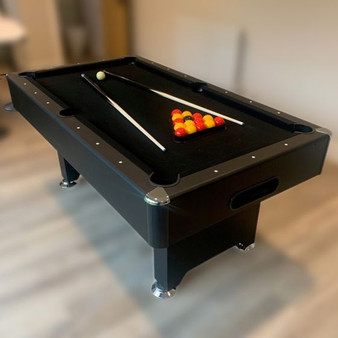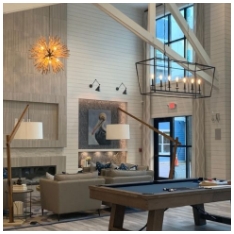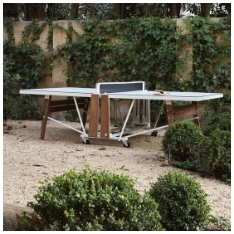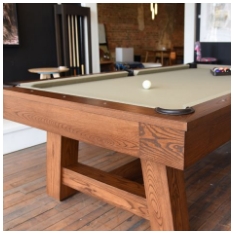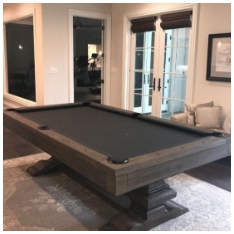When buying or playing on a pool table, one common term you will hear is “slate.” Slate is the material used for the playing surface of most professional and high-quality pool tables. Unlike wooden or synthetic alternatives, slate is a type of natural stone that is cut, polished, and leveled to create a smooth and even playing field.
The main reason slate is preferred is because of its durability and its ability to remain perfectly flat over time. This ensures accurate ball roll and consistency, which are crucial for both casual players and professionals.
In simple terms, slate is the foundation of a pool table’s performance. Understanding what it is, why it is used, and how it compares to other surfaces will help you make an informed choice if you are considering buying a pool table or improving your gameplay.
Why Slate is Used on Pool Tables
Accuracy and Level Playing Surface
The most important role of slate is to provide a perfectly level playing field. Wood and composite materials can warp, bend, or shift with changes in humidity or temperature. Slate, being a solid rock, does not warp in the same way. This means players can rely on consistent ball movement.
Durability
Slate is long-lasting. A properly maintained slate bed pool table can last decades without losing its flatness. This makes it an investment for clubs, billiard halls, and serious home players.
Professional Standards
Nearly all professional tournaments and billiards organizations require slate bed tables. This is because only slate can provide the accuracy and quality of play that competitive games demand.
How Slate is Made for Pool Tables
Quarrying and Cutting
Slate comes from natural stone quarries. Large pieces are cut from the quarry and then sliced into slabs suitable for tables.
Polishing and Leveling
The slate is ground and polished to achieve a perfectly smooth and flat surface. This process is crucial because even minor imperfections can affect the way balls roll.
Assembly in Pool Tables
Depending on the size of the pool table, the slate may come in one, two, or three pieces. Larger tables usually use a three-piece slate bed for easier transport and precise leveling during installation.
Slate Thickness in Pool Tables
The thickness of slate varies, and it directly impacts performance and durability.
- ¾-inch Slate – Common in smaller or entry-level tables. Provides decent play but less durability.
- 1-inch Slate – The standard for professional-grade tables. Offers excellent durability and precision.
- 1¼-inch Slate – Found in some premium tournament tables. Extra thickness enhances stability and consistency.
Most professional bodies, including the Billiard Congress of America (BCA), require a minimum of 1-inch slate for regulation play.
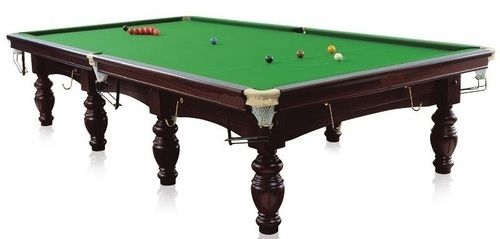
One-Piece vs. Three-Piece Slate
One-Piece Slate
A single piece of slate is often used in smaller tables or older models. While it ensures a continuous playing surface, it is extremely heavy and difficult to move. Leveling can also be harder because the entire surface has to be adjusted at once.
Three-Piece Slate
Most modern full-size tables use three pieces of slate. Each piece is precisely cut and matched, then joined together during installation. This design allows for easier transport, installation, and leveling. It also makes the table more stable over time.
Slate vs. Non-Slate Pool Tables
Not every pool table uses slate. Some lower-cost or recreational models use alternative materials.
MDF (Medium-Density Fiberboard)
MDF tables are lighter and cheaper. They are suitable for beginners, children, or spaces where portability is important. However, MDF can warp with humidity and lacks the durability of slate.
Slatron and Other Composites
These are synthetic alternatives designed to mimic slate at a lower cost. While they can be smooth and reasonably durable, they still cannot match the long-term performance of real slate.
Why Slate is Superior
Slate remains the top choice because it does not warp, lasts for decades, and ensures professional-level play. For anyone serious about pool, slate is the recommended option.
Caring for Slate Pool Tables
While slate itself is very durable, the table as a whole requires proper maintenance.
Leveling the Table
Even slate tables need occasional re-leveling, especially if the floor shifts or if the table is moved. A professional installer can adjust the slate pieces to ensure accuracy.
Protecting the Surface
The slate is covered with cloth (often referred to as felt). Protecting this cloth from spills, dust, and damage will keep the slate surface in good condition.
Long-Term Durability
A slate pool table can last for generations if properly cared for. Many antique tables still in use today have their original slate beds intact.
The Cost of Slate Pool Tables
Slate pool tables are more expensive than non-slate versions, but the cost reflects their quality and lifespan.
- Entry-level Slate Tables – Smaller, thinner slate options, more affordable.
- Mid-range Slate Tables – Standard 1-inch slate with durable construction, suitable for most serious players.
- High-end Slate Tables – Premium designs with thicker slate and ornate craftsmanship, often used in tournaments or luxury homes.
While non-slate tables might be cheaper initially, they often require replacement much sooner, making slate more cost-effective in the long run.
Conclusion
Understanding what slate on a pool table is helps players and buyers make informed decisions. Slate provides a perfectly level surface, unmatched durability, and professional-grade playability. While alternatives like MDF may be cheaper, they cannot match slate’s long-term performance.
If you are serious about pool or planning to invest in a table that lasts for decades, a slate bed table is the best choice. It remains the gold standard for players, enthusiasts, and professionals alike.
